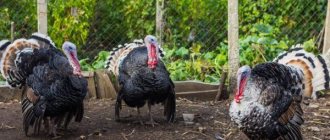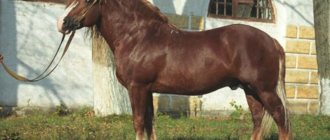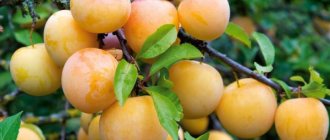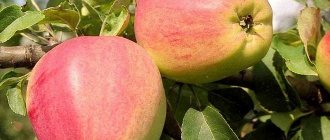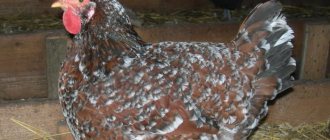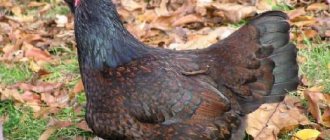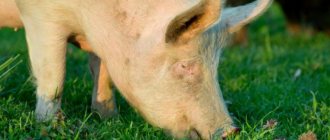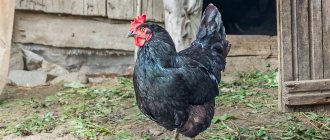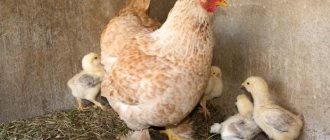What prompted Count Orlov to take up horse breeding?
The 18th century in Russia was a turbulent time, marked by a series of coups d'etat. It was on the eve of one of them that Count Alexei Orlov, the favorite of the future Empress Catherine the Great, rode with her from Peterhof to the royal palace to overthrow Peter III from the throne.
But before reaching the place only a few miles, the Neapolitan horses, discharged from abroad, simply stopped, they were so driven. The entire operation was going downhill, the fate of the conspirators, and the whole of Russia, hung in the balance. We had to quickly look for replacement horses in the surrounding villages.
After this incident, Count Orlov set out to breed a Russian breed that would be hardy, beautiful, fast and would never let you down, standing halfway from home. But it will take more than one year from the idea to the realization of this count’s dream.
Usage
Count Orlov created a trotter for use in a light harness. The horses met his expectations not only due to their ability to quickly and easily carry a carriage
The Oryol horses turned out to be very beautiful, so the nobility drew attention to them. It used to be considered fashionable to have such a horse
Oryol trotters were used by rich people for walking and hunting.
Today these horses participate in racing. This is a sporting breed, which over time has not lost its excellent qualities - energy, speed and endurance. In addition to participating in competitions, trotters are used for dressage and show jumping, as well as in equestrian tourism.
Oryol trotting horses are highly valued in Russia and in the world. Its representatives regularly take prizes, glorifying their country. The task of the Russian people is to preserve this breed, because it is part of our history.
A horse named Smetanka
After the brilliant victory of the Russian fleet in the battle of Chesma, Alexei Orlov visited the Turkish Sultan, where he purchased a tall light gray Arabian horse for absolutely fabulous money (50,000 rubles). This purchase was to be the cornerstone in the creation of his new breed.
The horse named Smetanka was transported from Turkey to the count’s stud farm in the village of Ostrov near Moscow for about two years. But his breeding career was short-lived. He lived away from his homeland for only a year, leaving behind 4 stallions and a mare.
Either the long road to the reins ruined the health of the hot Arabian handsome man, or an accident, which the stable workers talked about for a long time, one way or another, the horse passed away.
There were rumors that the groom pulled the bridle too sharply while the horse was drinking, causing him to stumble and hit his head on the rocks. It was not possible to save the animal. The groom was found hanged in the hayloft.
History of the development of the breed
In selection everything is decided by chance. You can cross different breeds for years and end up with nothing. But fate smiled at Alexey Orlov this time too. All 4 sons of Smetanka from a dun mare of Danish blood were very interesting from the point of view of selection, especially the last one, named Polkan.
Polkan adopted a lot from his overseas father - a beautiful appearance, tall stature, and most importantly, a fast, tireless trot, in a word, everything that the retired count wanted to get. This horse began to be crossed with Dutch and Mecklenburg draft mares and as a result they received another diamond - a stallion named Bars I. The draft form, the grace of Arabian horses, and, of course, the ability to trot quickly were expressed even more clearly in him.
It was Bars I who became the main breeding animal at the new stud farm of Count Orlov - Khrenovsky, built in the Voronezh province, on lands donated by Catherine II. Bars I covered both Norfolk trotting mares, and Dutch, and Danish. At different times, the Oryol breed of horses was fed with fresh blood, but all the animals born in Khrenovsky were descendants of Bars I.
Historical data
Oryol trotters were bred in the 18th century. At that time horses were the main means of transport. When traveling long distances, the horses broke into a gallop. This type of riding is faster, but has disadvantages:
- horses get tired earlier;
- animals smash their shoulders;
- crews are subject to strong storms and are more easily damaged;
- people feel uncomfortable and feel sick.
European varieties couldn't help. The animals were heavy and quickly exhausted. A new domestic breed solved the problem.
The breeding was carried out by Count Orlov A.G., who was looking for horses for selection in different parts of the world. I used, for example, Dutch, Neapolitan, Arabic. The decisive role was played by the stallion Smetanka. The count and his talented assistant, V.I. Shishkin, used an innovative system of training and selection of young animals.
The light-harness breed turned out to be large, beautiful, hardy and very fast. They named the new pedigree in honor of the count - Oryol.
These were horses for all occasions. The Oryol horse was suitable for parades, long journeys, agricultural work and cavalry. Thanks to the excellent, familiar trot, the animals did not get tired for a long time while running, and the carriages shook less. There have never been such breeds in history.
Oryol horses had great speed. Sometimes they set records, including world ones. These trotters spread throughout the Russian Empire and were sold abroad. They were favorites at international exhibitions and competitions.
At the end of the 19th century, a standard brand breed was brought to us. American trotters defeated the Orlov team in the race. As a result, many Russian horse breeders began to mix these two breeds.
The situation was turned around by pure Orlovets Krepysh. His victories made breeders think. The Oryol horses had potential, and they were “rehabilitated.”
In addition, American rivals were taken out only for records. Domestic trotters, in addition to speed, also had appearance, character, strength and other advantages. The defeats were partly explained not by genes, but by deficiencies in training and maintenance. For example, the horses’ legs were not protected, which reduced the results and maimed the horses. Animals were often beaten and lost at cards.
In Soviet times, overseas impurities were finally abandoned. Pure breed Oryols have become larger. Many showed better results than Krepysh.
In the 90s, stud farms went bankrupt. Oryol horses died of starvation or were sent to the slaughterhouse. The family tree was on the verge of extinction. She was saved by amateurs and specialists from Russia, other CIS countries, and France. Today, the number of Oryol residents is gradually being restored.
Characteristics of the Oryol breed of horses
People said about the Oryol trotters: “Both under the water and under the governor.” Indeed, tall, hardy, stately and fast, they could be used almost everywhere, that’s just the way it is, this Oryol breed of horses. In Russia, animals were used as both saddle and harness animals, they were used for plowing, and they were used to go to war.
The Oryol trotting breed of horses belongs to the category of large ones. Her height at the withers is 162-170 cm and her weight is 500-550 kg. These horses are massive and lean at the same time. The Oryol breed of horses is distinguished by powerful, strong bones, agility and ease of movement, and thin but surprisingly strong legs.
The head of the Oryol breed is quite large, slightly elongated, with a beautiful chiseled profile. The lower part of their forehead is slightly convex; below the bridge of the nose, on the contrary, there is some concavity.
The neck of Oryol trotters is often compared to a swan, its curves are so graceful. The body is round, quite wide and somewhat elongated.
The image is completed by lively, inquisitive, very expressive eyes and large moving ears.
Description
The Oryol horse is unique. It has several advantages:
- high speed;
- ability to move smoothly and gracefully;
- has a harmonious body shape;
- has perseverance, endurance and strength.
Exterior and color
The Orlov trotter is distinguished by its long back, since it has 1 more rib than other breeds, there are 19 of them, not 18. The horse is quite tall and has a harmonious physique. Horse characteristics:
The Oryol trotter has a long back
- height – 1.65-1.7 m;
- weight – 500 kg;
- the length of the body along the oblique line is 1.6 m;
- the chest is powerful, its girth is 1.8 m;
- the neck is long, curved, reminiscent of a swan;
- the head is compact with a slightly protruding frontal part and a neat muzzle;
- ears are small;
- the limbs are dry, of medium length with large hooves;
- The croup is compact.
The Oryol trotter is characterized by a gray color in various variations. Less common are individuals of black, dun or roan color, which is not considered a disadvantage. The horses inherited these colors from Dutch mares.
Character
By its nature, the Oryol trotter is a good-natured and docile animal that shows devotion to its owner. In return, he expects respect from the person. Some obstinacy is inherent in horses, but it can be caused by poor treatment of the animal. Horses respond to cruelty with a reluctance to obey . Representatives of this breed are hardworking and intelligent.
Oryol trotter colors
When you look at photos of Oryol trotting horses, it becomes clear that they do not have a specific color. Although one color still predominates - dapple gray. About half of all Oryol horses have this exact color.
This breed of horse is so varied; the Oryol trotter can be either bay or black. But the rarest specimens are nightingale and dun. The Oryol breed of horses received the gene responsible for inheriting cream coloring from a dun mare, the mother of that same Polkan.
The nature of animals and areas of their use
Horses of the Oryol breed have an energetic, but rather docile, calm and obedient character. Their peculiarity is high sensitivity. However, if they are not handled carefully, they may demonstrate fear, aggression and intimidation. There are very few embittered individuals among the entire population; mostly the animals are kind, gentle and affectionate. These qualities are the main reason that horses of this breed are often used as pleasure horses and used for children's and adult rehabilitation.
Several centuries ago, the demand for trotters was simply enormous. It was the Oryol residents who were most often harnessed to the royal carriages and traditional Russian troikas. In ancient times, it was impossible to imagine cavalry without Oryol horses. Hardy horses were often used by coachmen and people involved in agriculture. The flexible animals coped well with cultivating large fields and transporting peasants' carts.
Representatives of the breed began to be used at races much later. For a long time they were perceived as purely working horses and not sport horses.
With the development of the mechanization process, the demand for working horses decreased significantly. The number of animals fell sharply. The main scope of use of horses also changed: now Oryol horses were increasingly used not for hard work, but for participation in sports competitions. One of the most popular disciplines of that time was running with rocking chairs. Today, horses of this breed perform in dressage and competitions.
Famous Oryol trotters
One of the most famous Oryol trotters was a stallion named Krepysh. At the dawn of the twentieth century, his name thundered at hippodromes throughout the country. People from all over Russia and foreign countries came to see the unsurpassed champion. Large, stubborn in a good way, he was really eager to win, breaking all the records known before him. He raced 80 times, 55 of which he came first.
An interesting fact is that when Krepysh was still at a tender age, he was called nothing more than “a mosquito with long legs” - he was such an awkward and clumsy foal. Who could have known then that this “mosquito” would turn into a stately dapple-gray stallion that would glorify the Oryol breed throughout the world.
Another representative of the Oryol horse breed became famous in the post-war years. The stallion named Square, according to experts, was one of the most beautiful trotters in the world. He was inferior to other horses in agility, but won competition after competition thanks to his unprecedented endurance and perseverance.
There is a known case when the rider let go of the reins of the Square, because he thought that they could not win this time, and did not bother to strain the animal in vain. Kvadrat decided in his own way, he not only did not slow down, but also caught up with his opponents and in the last meters pulled his head forward. The photo finish showed that Kvadrat's nose was the first to cross the finish line! How popular the Oryol breed of horses was then! Kvadrat's photo graced the editorial pages of many famous publications.
At the end of his sports career, Kvadrat became a good sire; his blood flows in most modern Oryol trotters.
Worth its weight in gold
The most productive stallions left more than 600 offspring. If you calculate it by weight, it turns out that these stallions are literally worth their weight in gold.
Such horses are very valuable - they leave a noticeable mark on the breed. For example, Kvadrat is a legend and the main brand of the entire domestic horse breeding. This is a sure-fire winner and the undisputed champion of the Oryol trotters. The stallion was the main sire in MKZ No. 1 for 25 years.
Legendary Square. Father of over 600 foals. There are 2 monuments erected to him and an article on Wikipedia is dedicated to him.
Legendary Square. Father of over 600 foals. There are 2 monuments erected to him and an article on Wikipedia is dedicated to him.
“They sent him telegrams, delegations came, which included government officials of the highest rank, including heads of other states and partners of our country. On the territory of the Moscow Concert Hall No. 1, shows were held, the main “star” of which was Kvadrat, who came out at the end of the event. During such events, the most important state issues were resolved. In general, in the 80s, our factory and the Oryol trotter breed experienced their best times. It was with this stallion that the “art” of artificial insemination of animals in our country began. Freezing sperm and its widespread use in different regions of the country was a unique experience for the USSR, recalls Yuri Prokhorov.
Features of care and maintenance
For years, Count Alexey Orlov honed the characteristics of his new breed. One of the criteria was great endurance and unpretentiousness. The mares were specially kept in fairly cold stalls and fed coarse whole oats.
But this does not mean at all that even today Oryol horses should be kept in such Spartan conditions. For the horse's health and well-being, it needs a clean and spacious stall that is regularly ventilated.
The floor of the stall should not have any cracks or holes, as this can cause injury to the animal. Nowadays, special rubber coverings are often used; they reduce the load on the horse’s legs. Straw or sawdust is used as bedding.
Every day, any horse requires brushing its coat with a special brush made of natural hair; Oryol trotters are no exception. Also, after intense exercise, a sweaty horse must be dried immediately, since a hot animal can easily catch a cold.
The horse's hooves are carefully inspected and cleaned after each run. To prevent cracking and maintain a beautiful and well-groomed appearance, the hooves are lubricated with a special composition based on lamb fat, honey, wax and turpentine.
Balanced and regular nutrition is another important aspect in caring for a horse. The diet is usually based on good hay and selected oats. The food should contain vegetables and, in the warm season, fresh grass.
The horse should always have clean and cool water.
How much do thoroughbred horses cost and how are they sold?
The cost of horses depends on many factors. If we talk about MKZ No. 1 horses, their value is determined by the value of their origin, the quality of their exterior and the prospects for a racing career. The latter most often depends on the origin. It happens that at 1.5 years the price for a foal is one, and after testing at the hippodrome it increases many times over. Thoroughbred horses are sold at auctions. At last year's auction, prices for a stallion reached one million rubles
.
Horses show more than just their looks at auction
But these are the most expensive, not all Oryol trotters are able to show outstanding agility or have an ideal exterior. But the breed is versatile and beautiful; horses are used in amateur and children's sports, bought for harness work or simply as a pet.
The most expensive horse in the world
Oryol trotters are not among the most expensive. The most expensive are racehorses, individual representatives of Arabian and other exotic breeds. Their foals can cost up to $1 million, with record-breaking stallions costing even more.
According to information from the Internet, the cost of the most expensive horse in the world is $131.6 million. This is the stallion Frankel, a purebred English riding breed, famous for winning all the races in which he participated. It belongs to Saudi Prince Khalid Abdullah.
The most expensive horse in the world. Stallion Frenkel. Photo: wikipedia.org
The best horses are sold at auctions, in our country too. MKZ auction No. 1 in Russia is the only one of its kind; the best young stock of the plant is now being sold here. The auction has traditional visitors and buyers who know exactly what they are coming for and raise their bids to the last. These are breeders of Oryol horses who are looking for replenishment for their breeding staff, trainers of trotting departments. In recent years, interest has also appeared among foreign buyers.
— We sold Oryol trotters to Finland, Germany, Canada, China and other countries.
However, even now these are more likely to be single sales. At the last autumn auction we sold three horses in the USA - and this, unfortunately, is a rare event. It is worth noting that this is also a unique case, since the American market has a local breed that rivals the Oryol trotter in beauty, but not in agility,” adds plant director Yuri Prokhorov.
Prices for horses of the Oryol breed
The cost of such beauty primarily depends on why it is purchased. If you go to a private stable for the purpose of riding from time to time, a trained horse 5-9 years old will cost 150-200 thousand rubles.
It’s another matter if a rich sports career is predicted for the Oryol trotter. In this case, his parents and their title, the external parameters of the horse and its agility are considered. The order of prices in this case will be different. For breeding, animals that are stately and meet all the parameters of the breed are also selected. Their prices are sometimes exorbitantly high.
The Oryol trotter is the same symbol of Russia as the matryoshka doll or the Tula samovar. Our task is to preserve this treasure, no matter how difficult the times may be, it is part of our history, part of our Russian heart.
Basic care requirements
The Oryol horse is a completely unpretentious animal. She does not require special conditions of maintenance and does not cause serious problems to her owner. The pets were bred in cold northern latitudes, which explains their excellent adaptability to any climate conditions. The optimal type of housing for them is stable or stable-pasture. Horses can live in both stalls and stalls. The first option is considered more suitable, since in this case they get more freedom. Animals' homes must be cleaned several times a week. Maintaining cleanliness in the stables will prevent litter from rotting, avoid the appearance of rodents and parasites, and the development of infectious diseases.
Trotters need to be brushed every week. To do this you need to use combs and brushes. There are also devices designed specifically for treating hooves. During hot periods, horses will enjoy water treatments. If there is no clean open water nearby where you can take your pet for a swim, you should organize a light shower using a hose. Each active training session, after which the animal is lathered, should end with wiping its body with a dry cloth.
Despite the fact that the trotters bred by Count Orlov are famous for their good health, they require regular vaccination. Timely vaccinations will help prevent the development of infections. Approximately once every few months you should visit the veterinarian for preventive purposes. Visits to a specialist are also necessary before each exhibition or competition. Hoof shoeing should only be done by experienced professionals.
